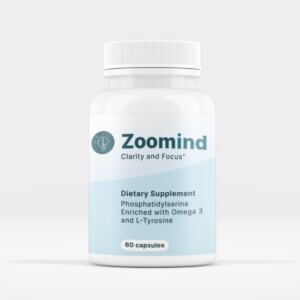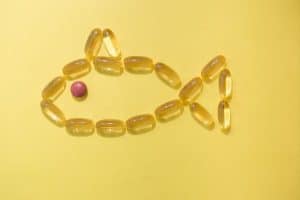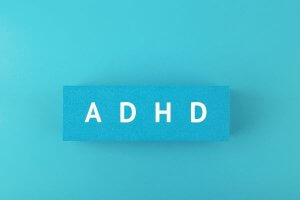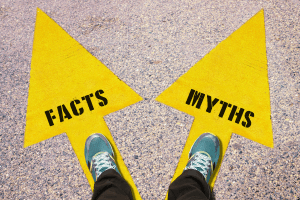 Imagine this: after years of trial and error, you’ve finally found a way to manage your ADHD. Your focus has improved, you feel more in control, and life seems a bit easier to navigate. Then, out of nowhere, perimenopause hits. Suddenly, the strategies that worked so well before aren’t cutting it anymore. Your focus slips, cognitive changes like memory lapses and brain fog worsen, and emotional regulation feels harder than ever. The hormonal shifts of menopause don’t just bring physical changes, they can amplify ADHD symptoms, making an already challenging condition even tougher to manage. For many women, this phase can feel like starting over, but understanding what’s happening is the first step toward regaining balance. Let’s unpack how menopause and ADHD intersect, and what can be done about it.
Imagine this: after years of trial and error, you’ve finally found a way to manage your ADHD. Your focus has improved, you feel more in control, and life seems a bit easier to navigate. Then, out of nowhere, perimenopause hits. Suddenly, the strategies that worked so well before aren’t cutting it anymore. Your focus slips, cognitive changes like memory lapses and brain fog worsen, and emotional regulation feels harder than ever. The hormonal shifts of menopause don’t just bring physical changes, they can amplify ADHD symptoms, making an already challenging condition even tougher to manage. For many women, this phase can feel like starting over, but understanding what’s happening is the first step toward regaining balance. Let’s unpack how menopause and ADHD intersect, and what can be done about it.
What is ADHD?
ADHD stands for Attention-deficit/Hyperactivity Disorder. It is a brain condition that impacts a person’s ability to focus, control impulses, and sometimes manage hyperactivity. ADHD happens because of differences in how the brain develops and can continue into adulthood. For a long time, ADHD was mainly identified based on how it appeared in boys, which caused many cases in girls and women to go unnoticed. Many women go through life not realizing they have ADHD, even though they may face challenges because their ADHD doesn’t align with the expectations of a neurotypical world.
What is perimenopause?
Perimenopause is the phase before menopause that usually begins in a woman’s late 30s or early 40s and can last up to 10 years. During this time, changes in the levels of hormones like estrogen and progesterone can cause a variety of symptoms. Some common signs are hot flashes, night sweats, mood changes, trouble focusing (often called “brain fog”), joint discomfort, and feeling tired. Perimenopause has the power to affect every aspect of a woman’s life.
It’s important not to jump to the conclusion that perimenopause has begun just because your menstrual periods have become a bit irregular. The irregular periods could be coming from the condition known as Polycystic Ovarian Syndrome (PCOS), and in such a case, treating the root cause with an over-the-counter medication like Inisotol can restore regularity and let you get back onto a regular cycle. 
How does ADHD feel during perimenopause?
When perimenopause begins for a woman who already has ADHD, it can make managing symptoms harder. Women might notice their symptoms becoming more difficult to handle. Some women notice ADHD symptoms for the first time during perimenopause when changes in thinking and focus become more noticeable.
During perimenopause, the levels of estrogen and progesterone start to fluctuate and eventually drop significantly at menopause. This drop in hormones impacts the brain and how it functions. Estrogen is important for how the brain works. It helps increase the activity of dopamine and norepinephrine, which are brain chemicals that affect focus and decision-making. These chemicals are often out of balance in people with ADHD. Estrogen also supports memory and verbal skills while playing a role in managing mood and emotions.
During menopause, lower estrogen levels can affect how the brain processes dopamine, especially in areas like the prefrontal cortex. This change may make ADHD symptoms worse. At the same time, lower serotonin levels can lead to feelings of sadness or low mood. Together, these shifts in brain chemicals are believed to play a role in the challenges some people face during this time.
Changes in progesterone levels can affect mood and anxiety. During perimenopause, irregular progesterone cycles may contribute to irritability or emotional ups and downs, especially for women with ADHD.
What symptoms may get worse during perimenopause?
During this transition, common symptoms that may get worse include trouble focusing and staying attentive, issues with staying organized and remembering things, feeling mentally unclear or forgetful, and experiencing mood changes or difficulty managing emotions. Women with ADHD often face worse menopausal symptoms compared to those without ADHD. They tend to report more anxiety, depression, hot flashes, and sexual health issues.
ADHD symptoms often follow a unique pattern as a woman moves through different stages of life. Before perimenopause, many learn how to manage a stable set of symptoms, often leaning more toward inattention. During this time, they can develop strategies to handle daily responsibilities. Higher and more regular estrogen levels during the reproductive years may also help reduce the impact of some ADHD symptoms.
After menopause, some women notice that their symptoms either improve or stop getting worse.
This improvement could happen because:
- The brain adjusts to consistent but lower hormone levels.
- Life becomes less stressful or demanding.
- Treatment and coping strategies are put into practice.
Managing ADHD through the transition

How the right diet can help both ADHD and menopausal symptoms
Zoomind is a dietary supplement made with a mix of phosphatidylserine, L-tyrosine, and omega-3. It is designed to help improve focus and mental clarity for people with ADHD. The main ingredient in Zoomind, omega-3, has also been extensively studied for women going through menopause. Omega-3 fatty acids are known to support overall health and may help with conditions like heart disease, arthritis, high blood pressure, Alzheimer’s, diabetes, and more. They also have anti-inflammatory properties that could help reduce some of the symptoms of menopause.
Postmenopausal women often have higher triglyceride levels compared to women who have not yet gone through menopause. This can increase their risk of heart disease. Omega-3 fatty acids are known to help lower triglycerides, so many healthcare providers suggest that women in menopause aim to get at least 1 gram of omega-3 per day through food or supplements. Omega-3 fats can help lower inflammation, which might ease joint pain and stiffness linked to menopause arthritis. They work in a way similar to common anti-inflammatory medicines like Advil.
Menstrual pain is a common issue for women going through perimenopause. During this time, many experience stronger cramps and discomfort. This happens because of substances in the body called prostaglandins, which can be either helpful or harmful. Unfortunately, menopause increases the harmful kind, but omega-3 fatty acids can help boost the helpful ones.
Menopause can bring emotional challenges like depression and irritability, but omega-3s might help reduce these symptoms. Omega-3s support brain health by improving mood and helping brain cells stay strong.
Eating more omega-3 fatty acids can help improve bone strength and make bones healthier. Since menopause increases the risk of osteoporosis due to lower estrogen levels, adding omega-3s to the diet is important for women going through menopause.
Hot flashes are a common symptom of menopause, and how often they happen can differ a lot. Some women experience them as rarely as once a week, while others may have them every 30 minutes. Omega-3 might not reduce how intense hot flashes feel, but with the right amount, it can reduce how often they occur.
Vaginal dryness is a common symptom of menopause. Fatty acids can help by providing overall lubrication for the body, which may reduce this dryness.
Medication Approaches
Stimulant medications work well for women in midlife and are often the main pharmaceutical treatment options. Non-stimulant medications, like atomoxetine, have also been shown to be effective. During perimenopause, some women might need changes to their medication dose. This could mean taking a higher dose or splitting the dose to keep it effective. This is especially true if they notice their usual dose doesn’t seem to work as well after hormonal changes.
Hormonal considerations
Low estrogen levels can make ADHD symptoms worse, so hormone replacement therapy (HRT) might help some women. HRT isn’t a direct treatment for ADHD, but increasing estrogen levels may improve how neurotransmitters work, which could reduce issues like cognitive fog.
Behavioural and lifestyle strategies
In addition to medication, behavioral support plays an important role. Cognitive-behavioral therapy (CBT) designed for adults with ADHD can help women develop skills like staying organized, managing their time, and handling emotions. These tools can be especially helpful during midlife when challenges often increase.
Other supportive approaches include regular exercise, which can improve thinking skills and help manage weight gain and mood changes during menopause. Stress management techniques, like mindfulness meditation or yoga, can reduce anxiety and help with emotional balance. Good sleep habits are also important, as insomnia is common during menopause and can make it harder to focus. Keeping track of symptoms can help identify patterns and how they relate to hormonal changes. There are great benefits from simple boosters like the Sleep Pack and the Stress Pack, which deliver non-pharmaceutical treatments to keep stress in check and allow you to enjoy a full night of restful sleep.
Professional support
Clinical guidelines for ADHD in women going through perimenopause or menopause are still developing, so it is often recommended to use a team-based approach where ADHD specialists or psychiatrists work alongside gynecologists or endocrinologists to address both ADHD and hormonal symptoms at the same time. Women should also be informed about how hormonal changes can impact ADHD symptoms.
Perimenopause can be a tough time for women with ADHD, but it’s usually a temporary phase. Once they reach post-menopause, many women notice their symptoms improve as hormone levels even out and they find ways to manage them effectively. There is still a lot we don’t know about how hormonal changes affect ADHD symptoms because this area hasn’t been studied much in the past. For years, research mostly focused on men, which left gaps in understanding conditions like ADHD in women.
Things are starting to change. Doctors are beginning to recognize the challenges women with ADHD face during hormonal changes. This has led to more research and better treatment options designed specifically for them.
FAQs
How do I know if I’m perimenopause?
A noticeable change in the length of a menstrual cycle lasting seven days or more could mean someone is in early perimenopause. If there are 60 days or more between periods, this may indicate late perimenopause. Many people also experience hot flashes and trouble sleeping, as these are common symptoms during this stage.
Can ADHD get worse in your 40s?
ADHD symptoms usually don’t get worse as people get older, but they often continue into adulthood. This doesn’t mean they’ll always be a problem. With the right help, good strategies, and proper treatment, anyone with ADHD can make big improvements and live a happy, successful life at any age.
How do you treat ADHD in perimenopause?
Hormone Replacement Therapy (HRT) helps balance hormone levels, like estrogen and progesterone, during perimenopause. When personalized, it can be especially helpful for women going through both perimenopause and ADHD, offering several important benefits.
What are the symptoms of low estrogen?
When estrogen levels drop, it can cause several noticeable changes. Hot flashes, night sweats, and sudden feelings of warmth are some of the most common symptoms. These happen when blood quickly moves to the surface of the skin. Low estrogen can also affect mood, leading to feelings of sadness, anxiety, or frustration. Additionally, thinning tissues may cause discomfort, and the skin might start to look more wrinkled.
How is female ADHD treated?
Treating ADHD in adults usually includes a mix of medication, education, skill-building, and therapy. Using these together often works best. These options can help control many ADHD symptoms, but they don’t completely get rid of the condition.







